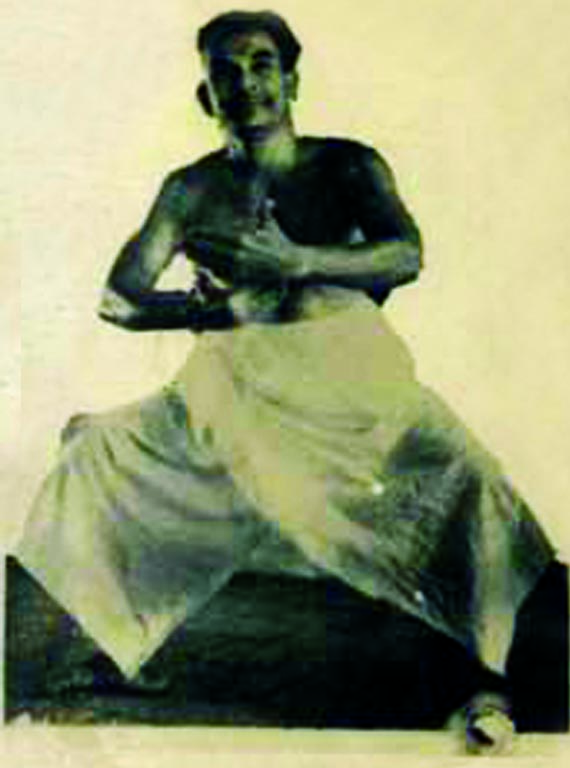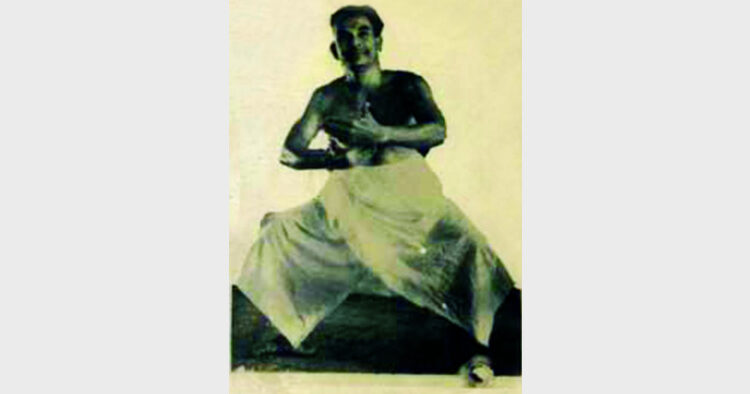
Kathakali Guru Thottam Shankaran Namboodiri
Remembering a Colossus of Art
By KG Suresh
Although the average educated person in the country is acquainted with the names of only a handful of artistes, India has produced countless number of talented and dedicated artistes, who worked selflessly and whole-heartedly for the emancipation of Indian culture and its varied art forms which had gathered a lot of dust during centuries of alien rule.
Guru Thottam Shankaran Namboodiri, one of the finest Kathakali performers the country has produced, was one such artist.
For the uninitiated, Kathakali, one of the oldest theatre forms in the world, is a group presentation in which dancers take various roles in performances traditionally based on themes from Hindu mythology, especially Ramayana and Mahabharata.
The Guru was born in Thakazhi, a mile from the famous Krishnaswamy Temple at Ambalapuzha in Alapuzha district of Kerala, in a family of landlords and the most orthodox of Brahmins.
After his upanayanam (sacred thread ceremony) and the completion of his studies of Vedic texts and other religious scriptures, young Shankaran evinced keen interest in dance and drama, especially Kathakali, which was viewed with disapproval by his father, a learned Pandit. Shankaran, who became the first Brahmin to take to Kathakali, nevertheless started studying Kathakali surreptitiously. And two years later, much to the amazement and ire of his father, he appeared in a Kathakali rehearsal witnessed among others by the family patriarch.
Himself a connoisseur of art, the father could not resist admiring his son’s talent notwithstanding his initial opposition and in due course allowed him to study natya properly. Encouraged by his father’s support, Shankaran studied abhinaya for four years under a well-known Chakkiyar and thereafter travelled across the state learning from different teachers whatever special knowledge they had. For a good 15 years, Shankaran toured all over Malabar with the best of Kathakali troupes and won recognition from kings, princes, local chieftains and temples in the form of vira shrinkhalas, medals and gifts. Simultaneously, the Guru also studied other forms of dance and Sanskrit drama, which over the years enabled him to become one of the best exponents of his art.
The Guru was perhaps the sole perfect master of the technique of Ekalochana. Ekalochana is a scene from the Attakatha (the verse text for a Kathakali piece) named ‘Duryodhana Vadham’ (the slaying of Mahabharata villain Duryo-dhana), in which Duryodhana while sitting in the garden with his wife Bhanumati is watched by a ‘Koki couple’ (birds). (It is said that these birds cannot meet after moon rise as a result of a sage’s curse).
These Chakravaka Pakshis as they are called, seeing Bhanumati’s face and mistaking it to be the moon are frightened and the female bird with one eye looks angrily at Bhanumati’s face and with the other looks sorrowfully at her mate. Here, the Guru with one side of his face expressed anger (raudra bhava) and with the other sorrow (karuna bhava) simultaneously.
But it was his encounter with the father of modern Indian dance Uday Shankar which changed the lives of both and heralded the entry of regional dance forms into the national mainstream. Overwhelmed by the Guru’s performance at the Palace of the Travancore King in 1934, Uday Shankar fell at his feet and requested him to be his Guru. They took a great liking for each other, which deepened and intensified further with time. The Guru accompanied Shankar to Kolkata in the same year to teach him and his troupe. Committed to the propagation of Kathakali, the Guru alongwith other actors and musicians toured across Northern India including Lahore, Delhi, Jaipur, Ahmedabad, Baroda, Bombay and Patna in 1936.
With the inception of the Uday Shankar India Culture Centre at Almora in 1938, the Guru moved to the Himalayan resort and consecrated the image of Lord Nataraja, the muse for traditional Indian artists. He taught Kathakali and expressions to group members and students for eight months and spent the winter with his family in Kerala.
The Centre also hosted other great masters like Guru Kandappa Pillai, Guru Amubi Singh, Vishnudas Shirali and Ustad Allauddin Khan and its students included Narendra Sharma, Guru Dutt, Sundari Sridharani, Kapila Vatsyayan and Shanti Bardhan.
Uday Shankar, alongwith his brother and Sitar maestro Pandit Ravi Shankar, also spent days together at the Guru’s native village and learnt the nuances of Kathakali.
The Guru’s love and affection for his pupil Uday Shankar was legendary. In fact, when the orthodox Brahmins in Malabar tried to dissuade him from travelling so far, the Guru is reported to have said, “If Shankar calls me even in the middle of the sea, I will unhesitatingly go to him”. He kept this promise till the last dying in the arms of his famous disciple.
A well-known art critic had described the 63-year old Guru’s final exit from the world stage on August 7, 1943 thus:
“The death that overtook the great master was as sudden as glorious. Five minutes before he had acted the scene of ‘Dussasana Vadham’, which was performed with the vigour and strength of youth, when the actor reached the very acme of perfection in the portrayal of the raudra aspect. The work done, the Guru went and sat in the auditorium and watched an item by the girl students. Just before ‘Indra’ was to begin, he relaxed in his seat and lolled over.
“He was taken in the fresh air when Dada (Uday Shankar) dressed up as Indra, ready to begin his dance, rushed out and caught hold of his Guru in his arms. Guru breathed his last, with a quiet, contented smile on his lips, body still moist with perspiration from his dance, surrounded by his pupils. It was unbelievable, monstrous. Yet, it was glorious, magnificent. He loved to dance and teach. He danced as he lived and he died dancing, at his best, every inch an artiste, dignified, straight and active even at 63…”
A shocked Uday Shankar, who regarded the Guru as the symbol of the Centre, said, “I cannot believe it, he looks so peaceful and happy. He has not only been a Guru and a father to me but much more. I feel bewildered but I know he is not gone. Fathers and Gurus never die, they are immortal. I have not been able in this life to get even a fraction of his art but I pray that when I die, I might at least follow him and depart suddenly, working and enjoying my work till the very last minute.”
The Almora Centre too was closed soon thereafter. A fresh attempt is being made to revive the Centre at a new location at Almora for which the foundation stone was laid by the then President APJ Abdul Kalam.?













Comments